Verbs with Spelling Changes in the Preterit
The spelling and pronunciation rules of Spanish are extremely consistent, and a conjugated form of the verb may have to change its spelling in order to maintain the pronunciation of the infinitive. In the
yo form of some verbs, adding ‐í or ‐é to the base of the verb changes the pronunciation of the word, so the spelling is changed to elicit the same basic sound as the infinitive.
Verbs that end in -car
The vowel that follows the letter c determines whether it is pronounced hard (like a k) or soft (like an s). The c is pronounced soft when followed by an i or an e; it is pronounced hard when followed by an o, a, or u. Thus, a verb ending in ‐car has the hard c sound in its infinitive form. All the conjugated forms must maintain this sound, but the preterit yo ending causes problems. The c becomes a soft sound when you add ‐é to the stem, which is unacceptable for a ‐car verb. For this reason, the letter c changes to qu in the yo form. Pronounce the ending (‐qué) like the English name “Kay.” The letter u is never pronounced when it follows a q. The combination of letters qu is always pronounced like a k, not like the sound in the English word “queen.” Table is the preterit conjugation chart for the verb practicar (to practice), whose conjugation is typical of all regular verbs that end in ‐car, including those in the list that follows Table 4-6. To simplify the rule: If a verb ends in ‐car, change the c to qu in the yo form of the preterit.

Some common verbs ending in ‐car:
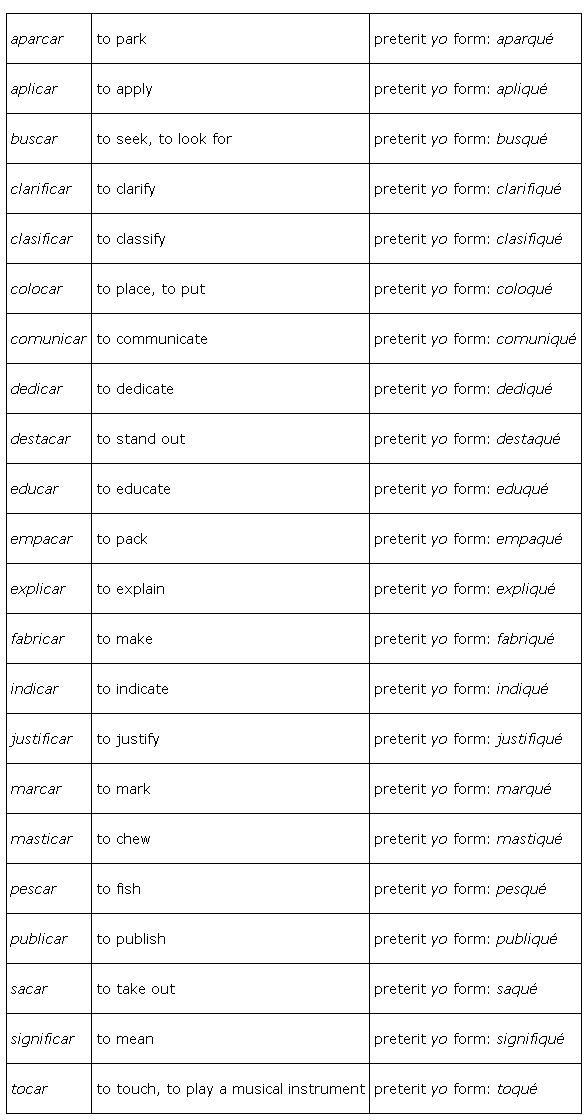
Verbs that end in -gar
The Spanish letter g behaves a lot like the letter c. The vowel that follows the letter g determines whether it is pronounced hard (like the g in “girl”) or soft (like the g in “gem”). Infinitives that end in ‐gar are pronounced with a hard g sound. To prevent this hard g from becoming a soft g with the addition of the preterit yo ending (‐é), the letter u is added between the g and e to maintain the sound of the infinitive. This yo ending (‐gué) sounds like the English word “gay.”
Table is the preterit conjugation chart for the verb cargar (to load), which serves as a good example for these types of verbs.
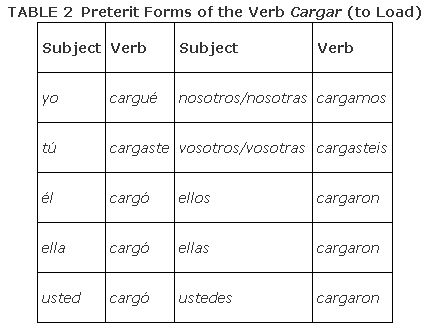
The following ‐gar verbs are conjugated like cargar in the preterit tense. They are regular in all forms except that you must change the g to gu before the regular yo ending.
Some common verbs ending in ‐gar:
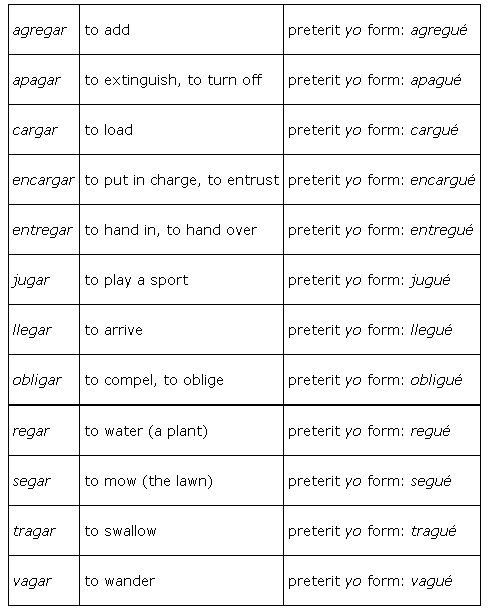
Verbs that end in -zar
You may have already learned a simple rule about the letter z in Spanish: “Whenever z is followed by e, it changes to c.” This rule is important in the preterit tense of verbs ending in ‐zar because the z must change to c before adding the ‐é ending in the yo form. The preterit conjugation of the verb rezar (to pray) in Table is an example of how to conjugate the ‐zar verbs in the list that follows.
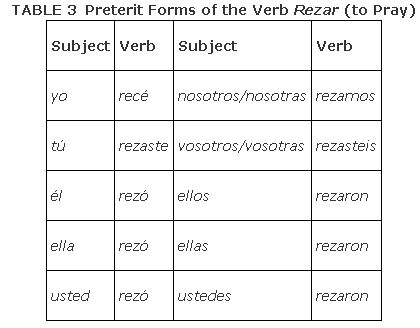
Common verbs that end in ‐zar:

i to y
A spelling change is necessary in certain forms in the preterit when the stem of the verb ends in a vowel. If the letter i is surrounded by two other vowels, you must change the i to y. The ‐er and ‐ir preterit endings cause the i to change to y in the third person forms (él, ella, usted, ellos, ellas, and ustedes). An accent will be added to any other i in the conjugation chart. Look carefully at the accent marks in Table . This conjugation chart of the verb creer (to believe) serves as an example for the verbs in the list that follows.
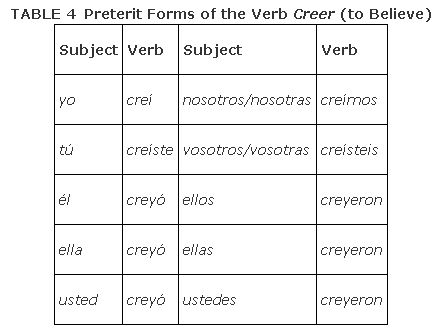
Other verbs that have a base ending in a vowel are also conjugated like creer. Many of these verbs end in ‐uir.
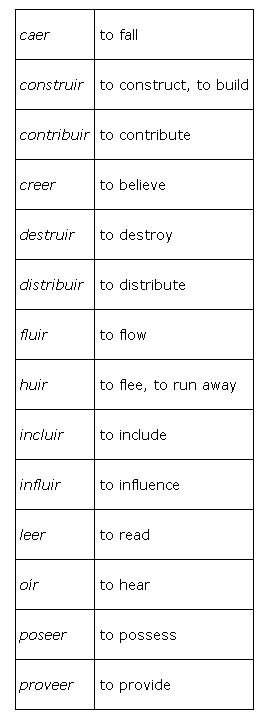
Verbs ending in ‐guir are exceptions to the above rule because of the special issue posed by the g. The verb s eguir (to follow, to continue) appears to have spelling issues, but actually it does not. As you can see in Table , although it looks very strange, it is conjugated like an ‐ir stem‐changing verb.
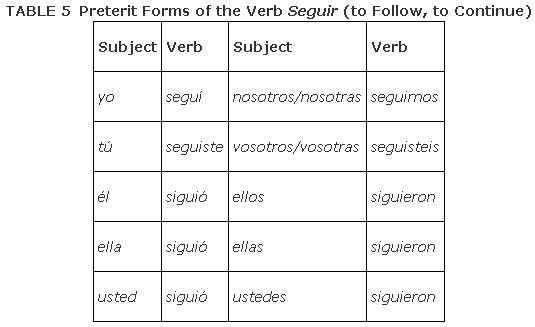
|
|
|
|
|
|
|
|
|
|
|
|
|
|
|
|
|
|
|
|
|
|
|
|
|
|
|
|
|
|
|
|
|
|
|
|
|
|
|
|
|
|
|
|
|
|
|
|
|
|
|
|